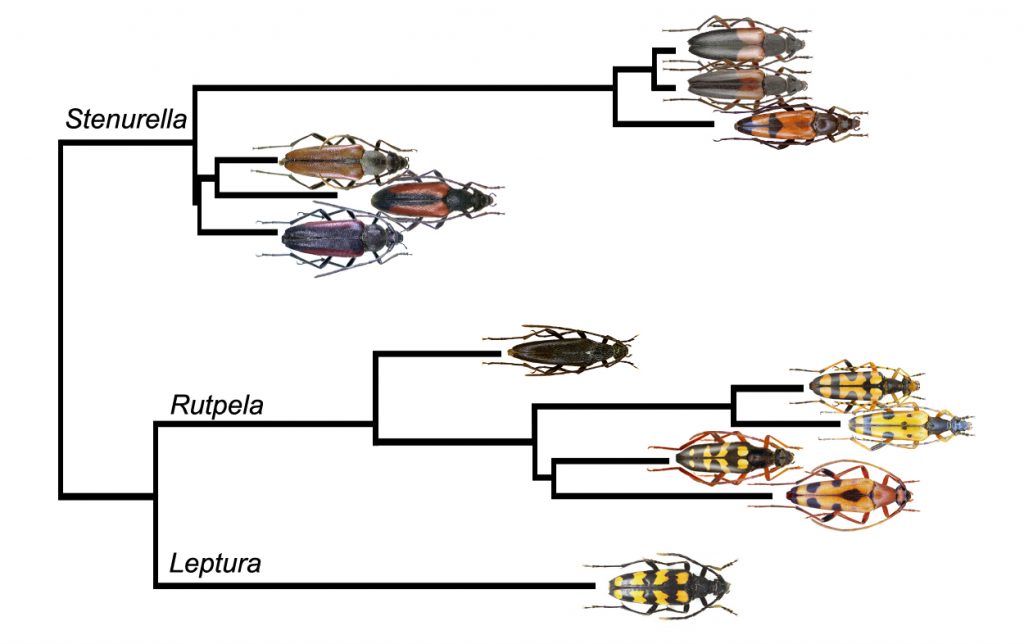The scientific group headed by Dr. Andrew Zamoroka, an associate professor of our Department, presented a new paper with a solved taxonomical puzzle regarding the two genera Stenurella and Rutpela. The genus Stenurella is represented by small-sized and widely distributed nine Palaearctic species. Representatives of the genus play a key role in the wild angiosperms pollination, accelerate detritus cycle and make a significant contribution to the forest food web. A number of species with heterogeneous morphological features found within the single Stenurella genus indicates the need for revision of this genus taxonomy. The previous attempt to resolve the intrageneric composition of Stenurella was rather artificial because it did not take into an account evolutionary relationship. In this study researches tested the existing model of Stenurella intrageneric subdivision using both morphological and molecular approaches. Their results showed that genus Stenurella is polyphyletic and consists of two unrelated clades. The first clade comprises six species (Stenurella jaegeri, Stenurella novercalis, Stenurella bifasciata, Stenurella melanura, Stenurella hybridula and Stenurella approximans) and the second includes three other species which are closely related with Rutpela (Rutpela septempunctata, Rutpela vaucheri and Rutpela nigra) due to both morphological and molecular phylogeny. Researches revised the present structure of the genus Stenurella and transferred three species of the second clade to the genus Rutpela, sensu novo. They redescribed the genus Rutpela in the light of a new results. Furthermore, scientists subdivided genus Stenurella, sensu nov. into two subgenera, Stenurella, subgen. sensu nov. and Priscostenurella, subgen. sensu nov., respectively. Also, the genus Rutpela, sensu nov. was subdivided into four subgenera including Nigrostenurella, Rutpela, Eduardvivesia, subgen. nov. and Nigromacularia, subgen. nov. The assessment of place of Stenurella, sensu novo and Rutpela, sensu novo within Lepturini based on molecular phylogeny, showed that Stenurella, sensu novo belongs to Anoplodera-branch and Rutpela, sensu novo nested within Leptura-branch. These together with morphological features confirmed the idea of scientists on evolutionary distinctiveness of Stenurella, sensu novo and Rutpela, sensu novo. Researches assumed that the general external morphological similarity of Stenurella, sensu novo and Rutpela, sensu novo was the result of convergent evolution, driven by mimetic selection toward imitation of ants or wasps. Finally, they established a natural phylogenetic taxonomy of Stenurella.
A half-century old mystery has been revealed

